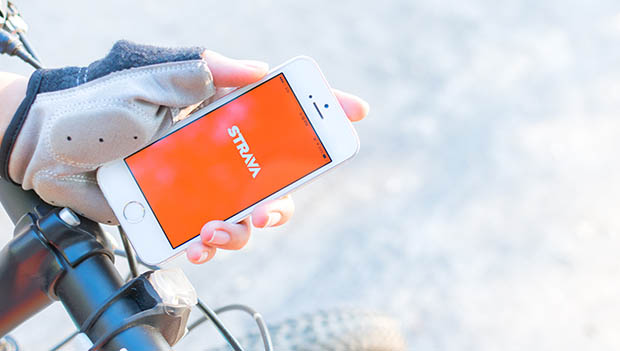
As swimmers, cyclists and runners, we've all heard the cheeky saying, "If your workout isn't on Strava, it never happened."
Strava has become a phenomenon in the endurance scene, where millions of athletes are uploading their workouts to their Strava profiles and sharing their activities with friends.
But if you're new or you're not especially tech savvy, what is Strava? And why should you care?
It's essentially a social network-meets-training tool for athletes. Think Facebook for your swims, bike rides and runs, but with added performance features that can help you set and meet your fitness goals. It's a healthy blend of real-world data paired with motivation and accountably through community.
In its most basic form, Strava is super simple and easy to use—all you need is a smartphone and the Strava app to start logging your training efforts. But that's just the tip of the iceberg. We outlined everything you need to know to get started and point out some must-try features for Strava beginners.
Let's click record, shall we?
The App
As we've already mentioned, Strava has long been available to cyclists and runners as a downloadable app for your smartphone. Once downloaded (and you've created your account with all your data like weight, height, heart rate zones, etc.), you're now ready to begin.
The app uses GPS tracking from your phone, so if your phone has service in the area where you're working out, you'll be able to track your activity. Choose your workout type, click record and the app will start tracking not only the route you've taken but important metrics like speed, elevation, distance and more.
Once you've wrapped up your activity, it'll save your session to your profile where you'll be able to take a deeper dive into the available metrics and check out the route you've taken on the map. This is also the point where Strava really shines--you'll be able to compare your efforts against anyone else who's completed the same "segments" as you.
If you're always racing up the steep hill at the park behind your house, it's likely lots of other Strava users are too. You'll be able to see where you rank not just on the all-time list, but by your gender and age as well. The person who's done the specific segment the fastest is considered the King or Queen of the Mountain.
MORE: How Strava are you really?
Now let's say you do similar routes near your house all the time. Strava recognizes this and will automatically compare the splits for your most recent workout against previous efforts. If certain segments are faster, you'll see a little "PR" medal icon pop up under your "achievements" section (or you'll get a trophy if you're in the top 10 on the leaderboard). It's a great way to see how your pace is increasing, and many Strava users will target specific segments to best their previous time (or their friends' previous times).
Speaking of besting your friends' efforts, Strava encourages you to follow other athletes who are also using the app, just like you would on Instagram and Facebook. You'll be able to see all their public data, including data from specific runs and rides, which is a great motivational tool (so-and-so did a 10-mile run, I have to as well!). To keep the friendly competition going, you can leave comments on their activities and give them "kudos" for their efforts (similar to a "like" on Facebook). When you open the Strava app, you'll see a scrollable list of all the latest activities completed by friends you follow.
Another cool feature on the app worth noting is that Strava will compile all your swims, bikes and runs throughout the year, so you'll know not just how many activities you've done but the total number of hours, total number of miles and total feet of elevation gained. While this may not really matter on a daily basis, it's a nice top-level view of all the cumulative work you've put in over the years.
Connectability
The fun doesn't stop at the smartphone app—Strava can be connected to most GPS-enabled devices on the market. This means your GPS bike computer or fitness watch (Garmin, Wahoo, Polar, etc.) can record your activity without the use of your smartphone. Then once finished, it can be paired to your smartphone to upload to Strava.
All the features mentioned above will still work, but you'll have access to all the additional information your GPS device records, like power meter data, heart rate data, temperature and more. Better yet, opting for using a GPS device saves your smartphone's battery and doesn't use up all of your family's data.
Some of these GPS devices are preloaded with a feature called Live Segments that when toggled on, you'll be able to virtually race against your previous PR and the KOM for popular segments. It'll give you a warning, count you down, then let you know once the segment starts and finishes. You'll see your pace in real time, which will help you adjust your efforts or motivate you for the final kick.
Click here to learn more about Strava.
READ THIS NEXT: The 15 Kinds of Cyclists You'll See on Strava


